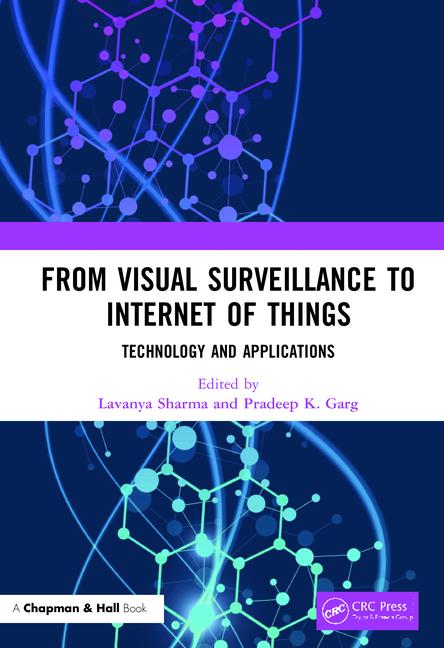Mobile Applications Gaining Ground in Security
The traditional office-based work environment is giving way to one that’s mobile and decentralized. Portable computing/communication devices such as wireless phones and the more sophisticated smart phones, PDAs, radio-frequency handsets, Netbooks and other Bluetooth, WiFi or 3G-enabled devices are freeing employees from their cubicles and creating the potential for increased mobility and productivity. And nowhere is this more true, or being greeted with more enthusiasm, than in the professional video security and surveillance industry.
Mobile and Web applications offer the promise of improved security operations, ranging from access control verification to remote video surveillance monitoring using hand-held devices or Web-based access, to more effective crime prevention through increased situational awareness. While the progress that network video and software development has made in the past few years is enabling this capability, the operational benefits are significant on their own and worth noting because of how they can positively impact an organization’s security strategy.
Mobile and Web applications offer the promise of improved security operations, ranging from access control verification to remote video surveillance monitoring using hand-held devices or Web-based access, to more effective crime prevention through increased situational awareness. While the progress that network video and software development has made in the past few years is enabling this capability, the operational benefits are significant on their own and worth noting because of how they can positively impact an organization’s security strategy.
Accessibility Wins
Most evident and arguably the primary reason for security management to include mobile and/or Web applications in the overall security plan is access to live or pre-recorded video surveillance images anytime, anywhere and on almost any mobile device. This remote monitoring flexibility, often at MPEG-4 quality, and the relative ease of installing video surveillance clients on a mobile device, provides management the opportunity to respond to and ultimately resolve issues faster and more efficiently.
And with some of the more sophisticated mobile devices and video surveillance software programs, built-in 3D visual effects, camera control functions and GPS features can provide additional and pertinent information to help strengthen the value of the system and the ROI (return on investment).
Video surveillance software for mobile and Web applications, which often include, at a minimum, motion detection and alarm notification features, can also help to add more eyes to a surveillance operation. These “intelligent” functions typically require low bandwidth while providing immediate detection and alerting for heightened situational awareness. Used in the proper applications, these programs can virtually eliminate the need to have an operator constantly monitoring a security system. Additionally, with mobile capability, on-site visibility of security personnel can be increased without compromising situational security and it is also feasible that mobility can affect manpower requirements and costs by allowing fewer personnel to cover an area. Think of the advantages on a campus environment where security guards can spend more of their time “in the field” as opposed to sitting behind a console in some administrative building.
Most video management software programs also offer mobile and Web application capability. The push technology which permits quick access to live video enables security management to make time-sensitive decisions from a remote location, review situations requiring collaboration with other parties or agencies, or even simply to manage staff remotely. Features such as push technology (automatic video delivery) are ideally suited to mobile video surveillance applications because it delivers live, real-time video to those who need it most, when they need it most. The video system becomes more valuable when the information can be shared and used immediately.
And with some of the more sophisticated mobile devices and video surveillance software programs, built-in 3D visual effects, camera control functions and GPS features can provide additional and pertinent information to help strengthen the value of the system and the ROI (return on investment).
Video surveillance software for mobile and Web applications, which often include, at a minimum, motion detection and alarm notification features, can also help to add more eyes to a surveillance operation. These “intelligent” functions typically require low bandwidth while providing immediate detection and alerting for heightened situational awareness. Used in the proper applications, these programs can virtually eliminate the need to have an operator constantly monitoring a security system. Additionally, with mobile capability, on-site visibility of security personnel can be increased without compromising situational security and it is also feasible that mobility can affect manpower requirements and costs by allowing fewer personnel to cover an area. Think of the advantages on a campus environment where security guards can spend more of their time “in the field” as opposed to sitting behind a console in some administrative building.
Most video management software programs also offer mobile and Web application capability. The push technology which permits quick access to live video enables security management to make time-sensitive decisions from a remote location, review situations requiring collaboration with other parties or agencies, or even simply to manage staff remotely. Features such as push technology (automatic video delivery) are ideally suited to mobile video surveillance applications because it delivers live, real-time video to those who need it most, when they need it most. The video system becomes more valuable when the information can be shared and used immediately.
Correlate and Fuse Video to Non-Video
Another benefit of mobile applications is their use in short-term and special event monitoring. For example, video surveillance and security for last year’s political conventions in Denver and Minneapolis made liberal use of mobile, Web and wireless technology. Approximately 100 video surveillance cameras were installed in each of the convention cities and users accessed the system from sub stations, at mobile command and control stations, from individual police vehicles and from federal agency MACC (Mobile Agency Command Center) locations. The software control platform allowed authorized users to correlate and fuse video and non-video events. Alerts were then automatically delivered to viewers of interest on their
mobile devices.
Unlike promises made with other new and developing technologies, mobile and/or web applications provide a qualified result. Its effects can be found in alarm verification, as law enforcement agencies continue to expand false alarm fines or in improved situational awareness as agencies respond to a call, and even in manpower reductions as security personnel are better able to multitask. Mobile and web applications in the video surveillance arena can make the responder more aware of the surroundings and thus more efficient and effective in the performance of duties.
mobile devices.
Unlike promises made with other new and developing technologies, mobile and/or web applications provide a qualified result. Its effects can be found in alarm verification, as law enforcement agencies continue to expand false alarm fines or in improved situational awareness as agencies respond to a call, and even in manpower reductions as security personnel are better able to multitask. Mobile and web applications in the video surveillance arena can make the responder more aware of the surroundings and thus more efficient and effective in the performance of duties.
Looking for a reprint of this article?
From high-res PDFs to custom plaques, order your copy today!





